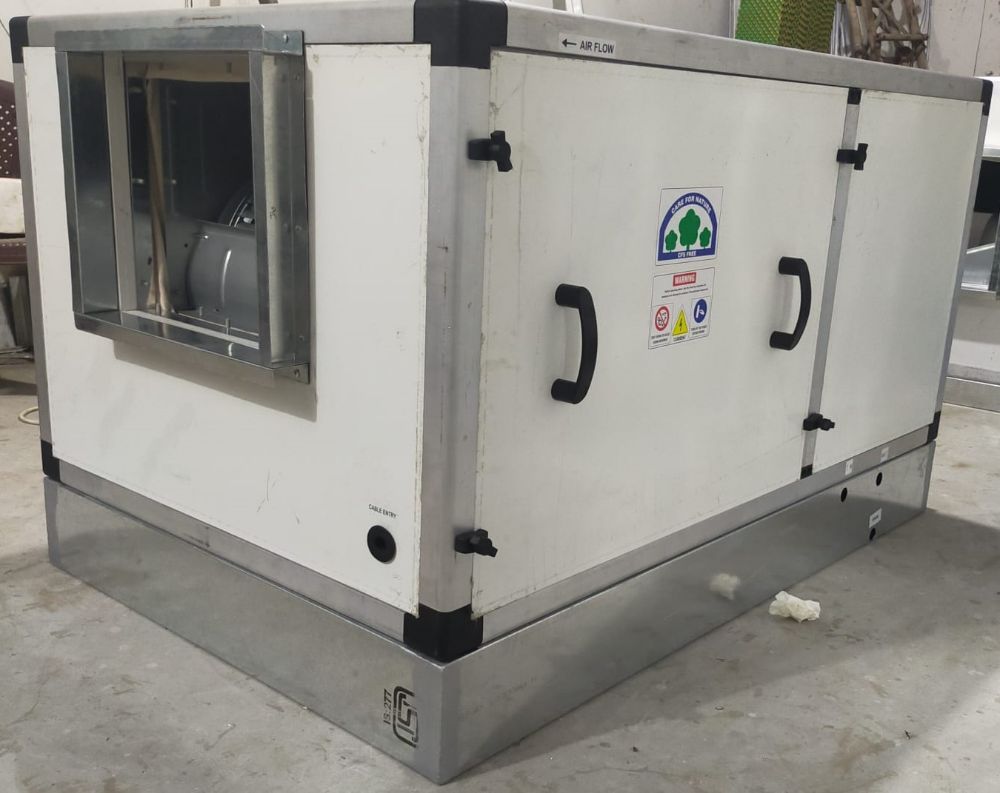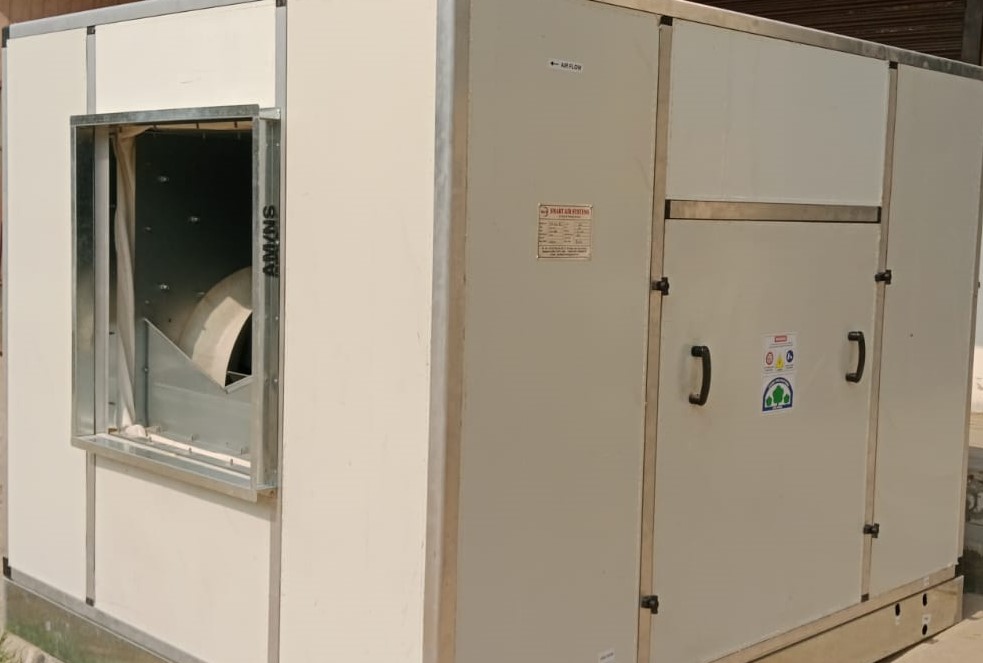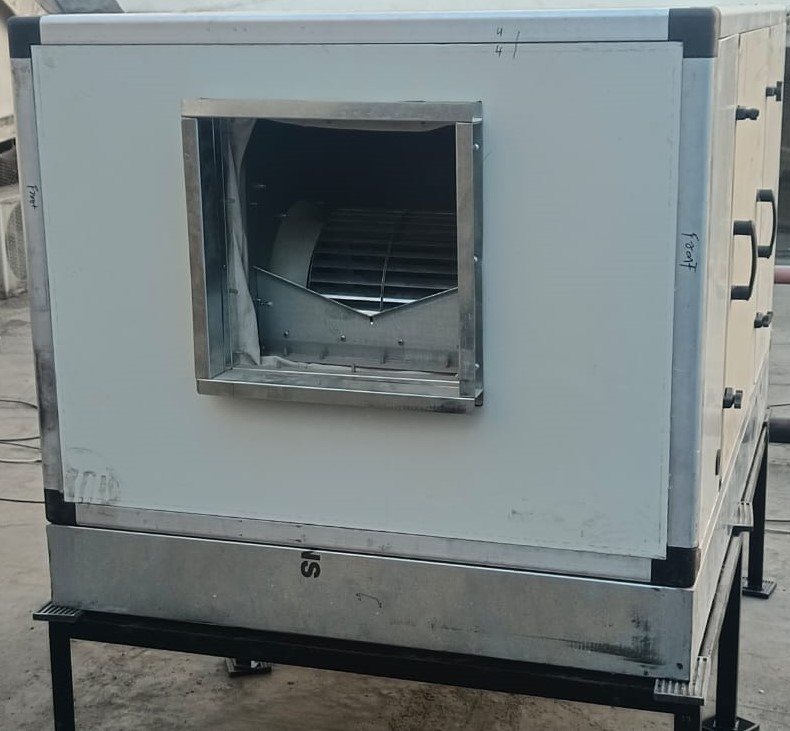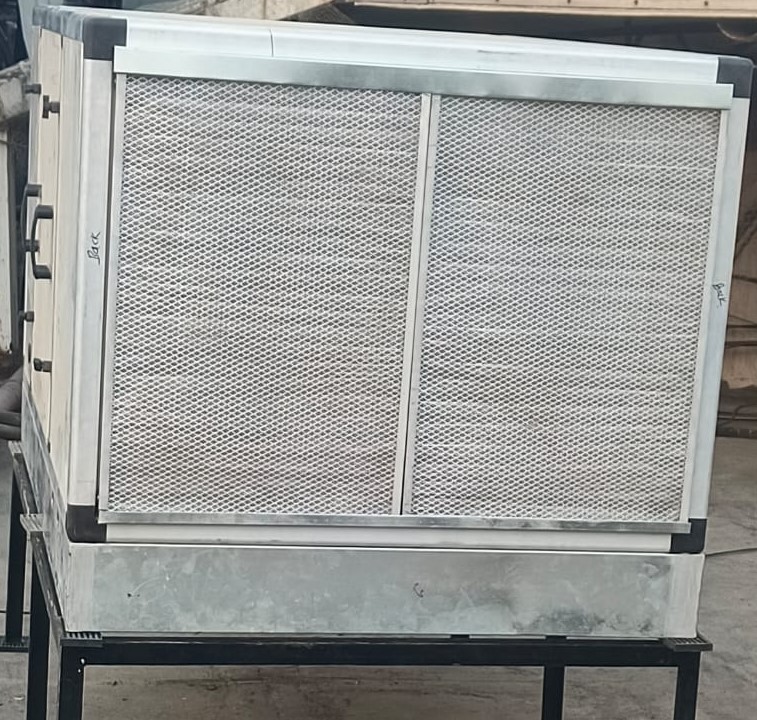Treated Fresh Air Unit
Treated Fresh Air Unit delivers fresh air into the building, especially a commercial building such as a mall, an office building, a hospital, a hotel, an industrial plant, a manufacturing company, an airport, a convention center, or any other commercial building. There are times when indoor air quality deteriorates because of several factors such as sudden surge in numbers of people inside the building, industrial activity, smoke, unwanted gasses, pollution, etc. During these times, intake of fresh air becomes paramount. Therefore, a treated fresh air unit is used to bring in the atmospheric fresh air inside the building. A treated fresh air unit or TFA unit in an HVAC system is also termed as a fresh air handling unit or FAHU. Before bringing in the fresh air inside the building, the fresh air goes through a series of filters such as a pre filter, or a fine filter in order to clean the incoming ambient air. Thereafter, this ambient air either passes through a heating coil or cooling coil in a treated fresh air unit in order to bring this ambient air to the desired building temperature. Thereafter, the treated fresh and conditioned air is released into the building. Sometimes, this treated and conditioned air is fed into the air handling unit wherein the treated fresh air mixes with the recirculated air and then the improved air is released into the building through the ductwork.

What is the difference between TFA and AHU?
The primary difference between a TFA and an AHU is that while an AHU recirculates the building air, the TFA delivers treated fresh air into the building. The appropriate amount of fresh air in any given building should ideally be 12-15%. In other words, approximately 85% of building air is recirculated via the AHU unit. And about 15% of treated fresh air is brought inside the building to maintain the air quality.
How does the fresh air handling unit work?
A Fresh Air Handling Unit (FAHU) or Treated Fresh Air Unit (TFA) has the following stages:
- Intake stage: The ambient fresh air is sucked into the Treated Fresh Air Unit.
- Filter stage: This ambient air passes through a series of pre filters and fine filters.
- Heating or cooling coil: The fresh air now passes either through a cooling coil or heating coil to reach the building temperature.
- Motor and fan section: The motor and fan section then delivers this treated fresh air either directly into the building or into the existing air handling unit.
- Supply stage: The treated fresh air is now delivered across the building through a network of ductwork.
- This way the fresh air concentration in any given commercial building is maintained.
- This whole process of maintaining the indoor air quality can be fully automated through controllers, actuators, sensors without any human intervention.

What is the difference between AHU and FAHU?
An Air Handling Unit delivers recirculated air whereas an FAHU delivers fresh air into the building. This is the major difference between an AHU and an FAHU. There are instances when an FAHU first delivers fresh air into an AHU and then the mixed air (recirculated air and fresh air) is supplied across the building.

What is the purpose of a fresh air unit?
The purpose of a fresh air unit is to maintain the indoor air quality inside any commercial building. This purpose is achieved by bringing in treated fresh air inside the building. Fresh air can either be directly delivered into the building or fed into the existing air handling unit. The air handling unit then delivers the mixture of fresh air and recirculated air into the building.

Construction of a Treated Fresh Air Unit:
- Triple skin body: A treated fresh air unit is constructed using a triple skin body. The outer skin is made from 0.6 to 0.8 mm pre-coated GI sheet, whereas the inner skin is made from 0.6 to 0.8 mm plain GI sheet. Recent innovations leverage a triple skin body wherein the innermost skin is made from 0.5 mm GI sheet with acoustic lining. This is done to minimize the noise levels. At the same time, the triple skin body results in a longer lifespan of the Treated fresh air unit.
- Since the purpose of the treated fresh air unit is to improve the overall indoor air quality, therefore, pre-filters and fine filters are used while constructing a TFA unit.
- The cooling coil can be either a chilled water coil or a DX coil. Depending on the type of the outdoor unit, the cooling coil selection is made. For example, in case of a chiller system, the chilled water cooling coil will be used. And in case of a DX outdoor unit, the DX coil will be used.
- Sometimes, in addition to the coil, a humidifier or dehumidifier coil is also used in order to add or reduce humidity into the air.
- Appropriate air volume of fan or blower is used. The blower can either be backward curved or forward curved. Once the selection of fan or blower is made, then, the appropriate rating of the motor is used.
- Supply mouth is made keeping in mind the application of the Treated fresh air unit. In case, the TFA is designed to deliver fresh air directly into the building, then, a large mouth of 2 feet x 2 feet or more is made. In case, the TFA unit is designed to deliver fresh air first into the existing air handling unit, then, a small mouth of 200 mm x 200 mm is made.
- Likewise, based on the application of the TFA unit, the total static pressure in mmHG is chosen. If the TFA unit delivers fresh air directly into the building, then, high static pressure is desired. On the other hand, if the TFA unit delivers fresh air into an existing AHU unit, then low static pressure is preferred.
- The functioning of a TFA unit or a Fresh air unit can be fully automated. The oxygen sensor placed in the return air duct sends a signal to the controller and then the controller opens or closes the TFA unit. In case the oxygen levels in the building are low, then, the oxygen sensor will give a signal to the controller to open the TFA. And if the oxygen levels in the building are appropriate, then, the controller will keep the TFA unit closed.
